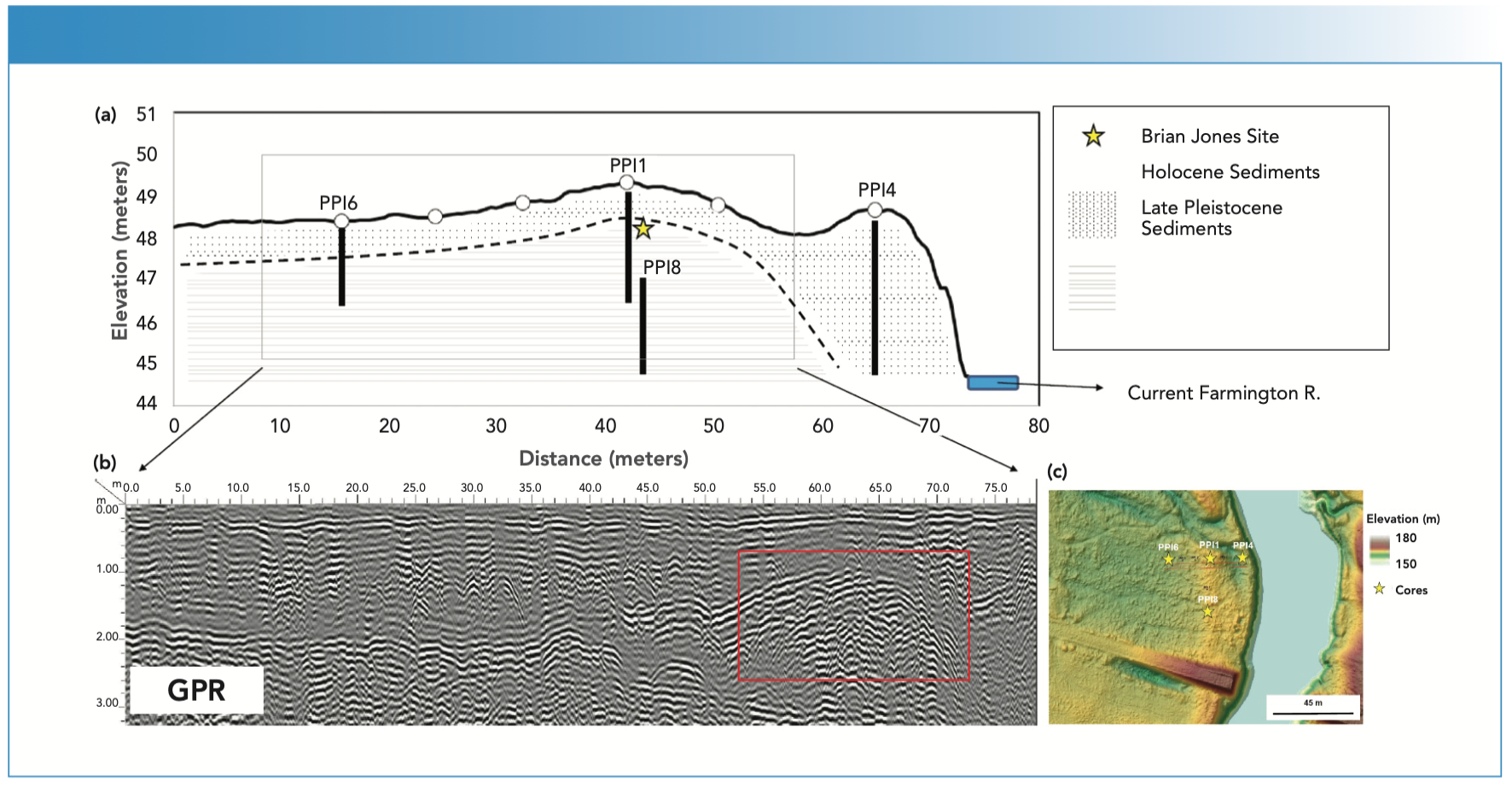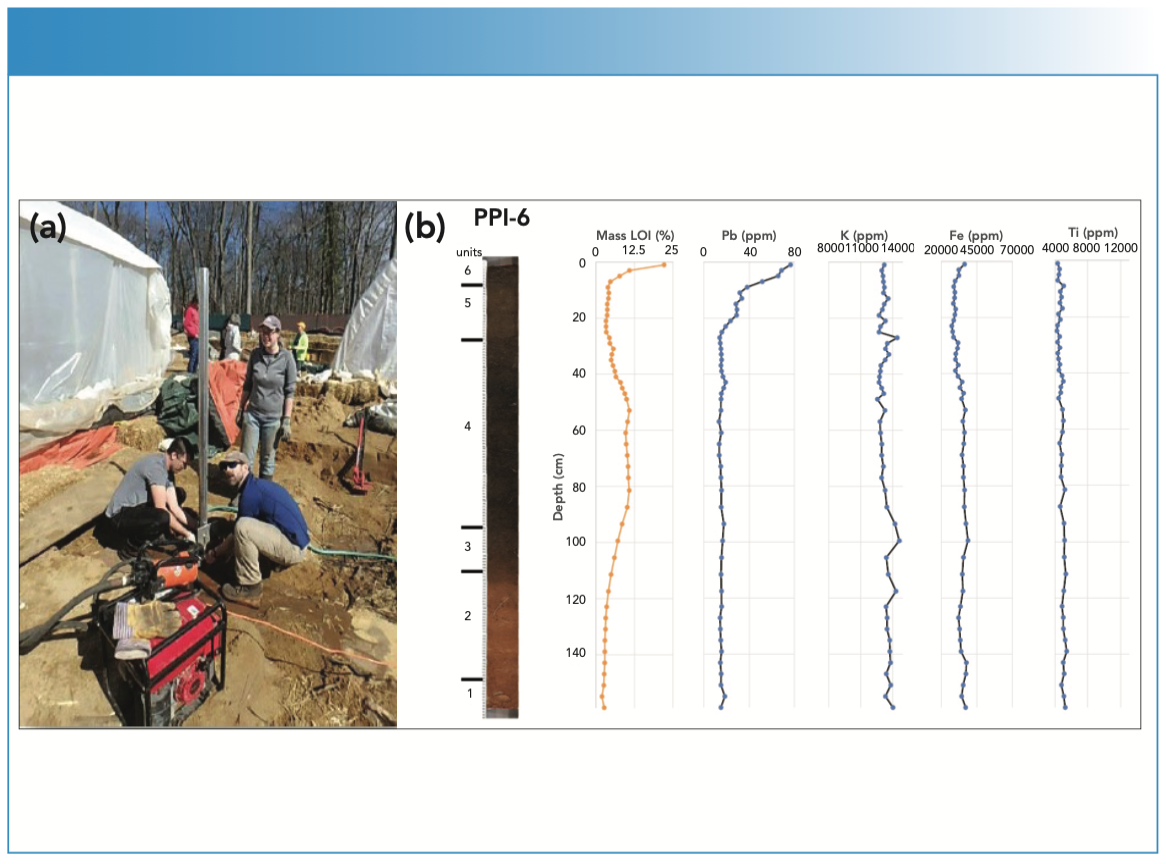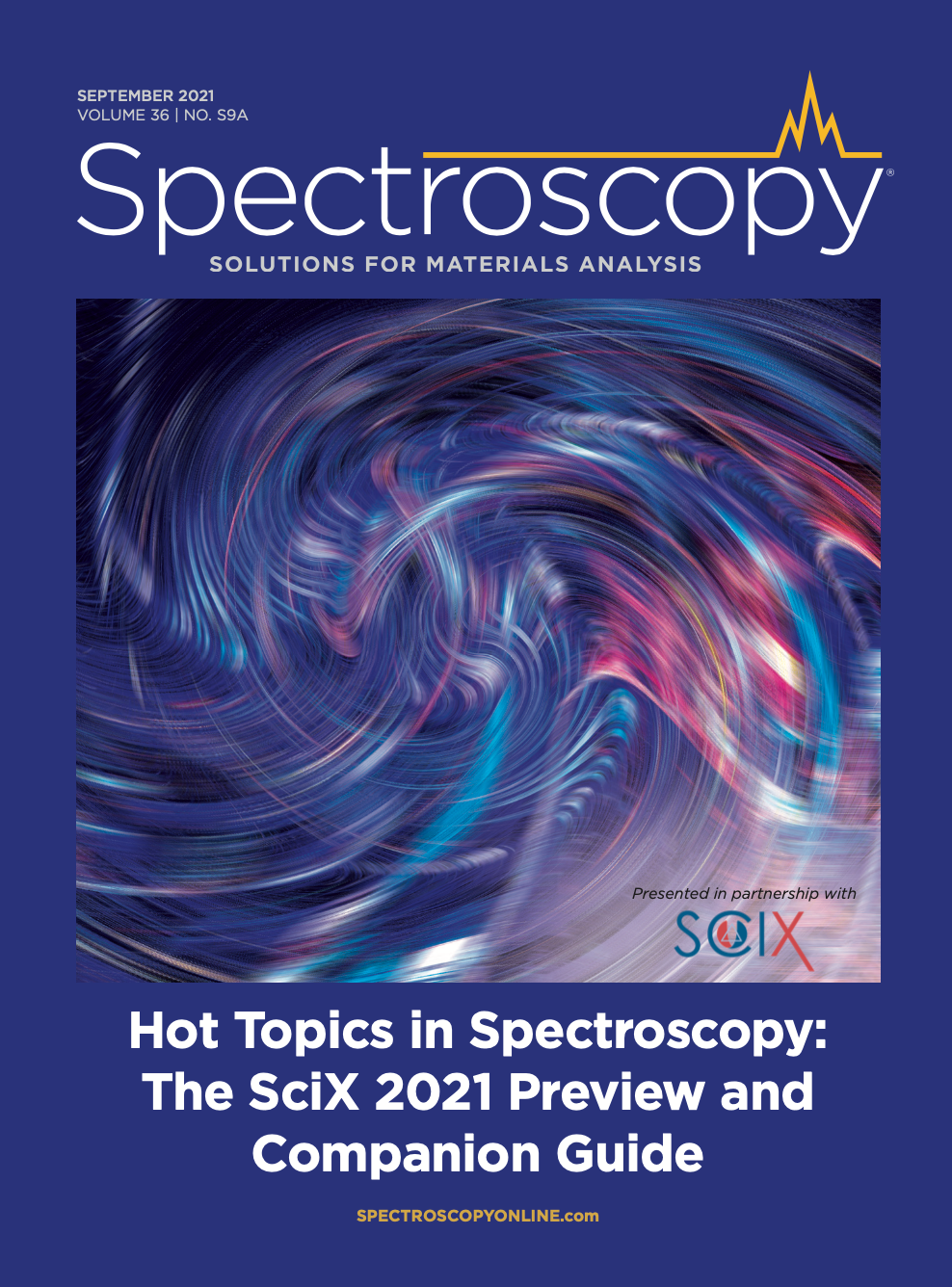Archaeological, Geochemical, and Remote Sensing Applications in the Search for Pleistocene Landscapes of New England
Recent archaeological work in southern New England has documented the presence of deeply buried late Pleistocene archaeological sites, preserved between three and six feet below the modern ground surface on alluvially buried terraces. One of these sites, the Brian D. Jones Site, was identified in 2019 and represents the oldest known archaeological site in southern New England, and has been radiocarbon dated to 10,520±30 uncalibrated years before present (BP) (1). The other, the Templeton Site, was identified over 40 years ago, and has recently been reinvestigated using modern excavation techniques; this site has been radiocarbon dated to 10,360±30 uncalibrated BP (2,3). The recent discovery of the Jones Site, the second deeply buried late Pleistocene site in Connecticut, necessitates a shift in the way archaeologists model and predict site location, as no other deeply buried sites have been previously found in New England. Here, a series of developing methods is presented for locating and analyzing deeply buried late Pleistocene archaeological sites, which includes the initial investigation of the geomorphology of a potential archaeological site with a suite of analytical geochemical techniques.
Prior to sedimentary investigations, remote sensing of landscapes using ground penetrating radar (GPR) and light detection and ranging (LIDAR) imaging of landforms provides a way to quickly assess a landform’s potential to contain buried paleosols and fluvially deposited sediments. A GSSI Utility Scan GPR system with a 350 MHz HyperStacking antenna is used to collect GPR transect data. The antenna and UtilityScan are mounted on a custom-built carriage by GSSI and utilize encoder-triggered collection of 50 traces per meter (one reading every 2 cm or 0.8 in). Data are collected in longitudinal transects (that are parallel and perpendicular to the terrace) to visualize the stratigraphy of a landform in three dimensions (Figure 1). LIDAR imagery is also useful for visualizing geomorphic trends in landforms that are not apparent at the human scale.
FIGURE 1: (a) Elevation profile of Brian D. Jones site (indicated by yellow star), with vibracoring locations indicated in black and labeled. (b) GPR inset displays complicated alluvial stratigraphy, as well as Pleistocene river terrace and archaeological site (red square). (c) LIDAR image displays modern elevation of landform, and, in yellow, the relict Pleistocene river terrace is visible, coinciding with PPI1 and PPI8 coring locations.

GPR and LIDAR results are then paired with terrestrial “vibracoring”, representing an efficient way to core a fluvial terrace (Figures 1 and 2). An electric- or gas-powered vibrating head (from a concrete mixer) is employed to vibrate and drive a core barrel into surface soil and sediments beneath. This method is generally used in underwater or saturated settings, such as wetlands, swamps, and marshes, but can also be used terrestrially after manually saturating the core collection area. Vibracoring reduces frictional and compressive disturbances to sediments, and provides continuous sample recovery of the stratigraphy at the site. This method permits collection of cores with a small group of people, providing a low-tech but high reward method for collecting and describing the sedimentary sequences at a site.
FIGURE 2: (a) Photograph of vibracore collection at the Brian D. Jones site. (b) PPI-6 hyper stacked image of core, with LOI and pXRF results displayed to the right. Note the elevation in LOI percentages within Unit 4, as well as the elevations in potassium and iron at unit boundaries between 2 and 3, and between 4 and 5.

General stratigraphic analyses of core sediments are critical to understanding the soil formation and taphonomic processes at a potential buried Pleistocene archaeological site. Following core extraction, the cores are split perpendicular to the direction of coring, using metal snips, and separated into two equal core halves using a piano wire to smooth the sediment profile. Both halves of the cores are cleaned; one is retained for archival purposes, the other is photographed using a Macroscopic Solutions CORE system. Macropod CORE is an automated system that stabilizes an individual core, allowing focus stacking of individual images, which results in a single panoramic high-resolution digital record of each core segment (Figure 2). Cores are then described using Munsell and stratigraphic unit descriptions.
Soils are comprised of mineral components, organic or humic matter, organisms, air, and water. The way that soils vary is a combination of all these factors, but from a geological and archaeological perspective, the variance in mineral components and what is described during macroscopic stratigraphic analyses is generally the most important. Following core descriptions, core sediment samples are analyzed using the following suite of techniques: accelerator mass spectrometry (AMS) radiocarbon dating, portable x-ray fluorescence (pXRF), and loss on ignition (LOI). These techniques provide a high- resolution way to determine the age of sediments, as well as possibly determine the provenience of these sediments. LOI is particularly useful when characteriz ing past environments, as with the Brian D. Jones Site, where a wetland developed adjacent to the site, and is recorded in core PPI-6 with elevated LOI values (Figure 2). AMS profiles of cores provide a useful map of Pleistocene and Holocene transitionary sediments that can be correlated with archaeological sites on these landforms, as recent work at the Templeton site demonstrates (Figure 3). pXRF analysis provides a geochemical signature (or proportion of elements) of sedimentary layers, which provides a “check” of the manual stratigraphic analyses conducted on the sediment cores. Patterns often exist within the proportion of elements in sediments that are not discernible through macroscopic stratigraphic analyses, aiding in fence-diagram correlations of sediments across a site. Elevated values of potassium and iron correlate to a sedimentary boundary between the formation of the wet- land in PPI-8 and the basal alluvially deposited layers beneath the wetland. Elevated lead levels are also useful in characterizing the upper layers of a core, as in PPI- 6, which clearly demonstrates the contamination of sediments during the industrial revolution, or Anthropocene. Taken collectively, significant variations and correlations in the elemental composition of sediments can be very useful in determining changes in provenance of alluvially deposited sedimentary layers.
FIGURE 3: Hyperstacked image of vibracore collected from the Templeton site, with preliminary unit designations and descriptions and AMS radiocarbon dating (uncalibrated) of sedimentary layers in red. Paleoindian occupation is indicated by a yellow star in Unit 8.

These methods, when used collectively to analyze a landscape, provide archaeologists with a way to assess “signatures” of buried Pleistocene landscapes. Moreover, high resolution AMS radiocarbon dating permits identification of areas that may contain late Pleistocene archaeological sites, guiding excavation of the surrounding areas. Application of this methodology and understanding the mechanisms that preserved archaeological sites at the Templeton and Brian D. Jones sites, will permit archaeologists to predict and locate other late Pleistocene archaeological sites in southern New England.
References
(1) D.E. Leslie, S.P. Sportman and B.D. Jones, PaleoAmerica 6(2), 199–203 (2020).
(2) R.W. Moeller, 6LF21: A Paleo-Indian Site in Western Connecticut, American Indian Archaeological Institute, Washington, Connecticut (1980).
(3) Z.Singer, The Paleoindian Occupation of Southern New England: Evaluating Sub-Regional Variation in Paleoindian Lifeways in the New England-Maritimes Region, Doctoral Dissertation, Department of Anthropology, University of Connecticut, Storrs, Connecticut (2017).
David Leslie is a Senior Archaeologist at Archaeological and Historical Services, Inc., who received his PhD from the University of Connecticut in 2016. He has over 15 years of geoarchaeological and environmental archaeological experience, collaborating on developmental sector and academic archaeological projects in the Northeastern United States, Sub-Saharan Africa, and Europe. Direct correspondence to: dleslie@ahs-inc.biz ●


New Study Reveals Insights into Phenol’s Behavior in Ice
April 16th 2025A new study published in Spectrochimica Acta Part A by Dominik Heger and colleagues at Masaryk University reveals that phenol's photophysical properties change significantly when frozen, potentially enabling its breakdown by sunlight in icy environments.
Tracking Molecular Transport in Chromatographic Particles with Single-Molecule Fluorescence Imaging
May 18th 2012An interview with Justin Cooper, winner of a 2011 FACSS Innovation Award. Part of a new podcast series presented in collaboration with the Federation of Analytical Chemistry and Spectroscopy Societies (FACSS), in connection with SciX 2012 ? the Great Scientific Exchange, the North American conference (39th Annual) of FACSS.
Advancing Corrosion Resistance in Additively Manufactured Titanium Alloys Through Heat Treatment
April 7th 2025Researchers have demonstrated that heat treatment significantly enhances the corrosion resistance of additively manufactured TC4 titanium alloy by transforming its microstructure, offering valuable insights for aerospace applications.
New Fluorescence Model Enhances Aflatoxin Detection in Vegetable Oils
March 12th 2025A research team from Nanjing University of Finance and Economics has developed a new analytical model using fluorescence spectroscopy and neural networks to improve the detection of aflatoxin B1 (AFB1) in vegetable oils. The model effectively restores AFB1’s intrinsic fluorescence by accounting for absorption and scattering interferences from oil matrices, enhancing the accuracy and efficiency for food safety testing.